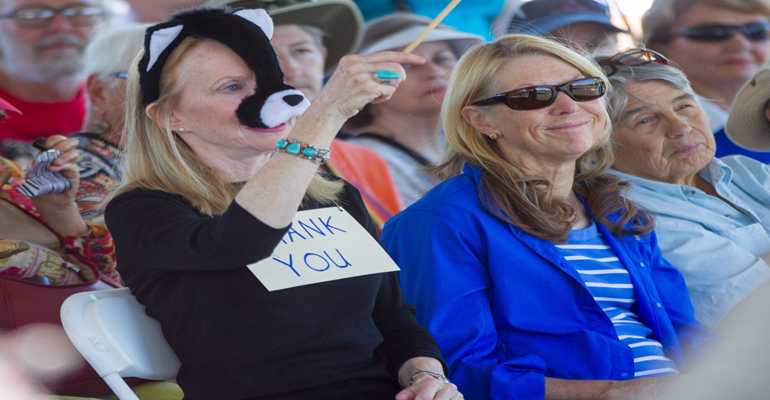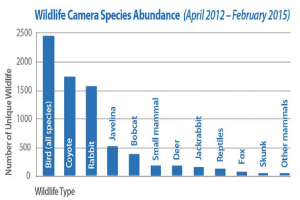
About 150 people, mostly aging baby boomers, some wearing animal attire attended a dedication ceremony on Tuesday morning for Southern Arizona’s first highway wildlife crossing. The wildlife bridge crosses Oracle Road, on State Route 77, between Oro Valley and Catalina.
The gimmicky project was pushed by activist and animal fanatic Carolyn Campbell. The Arizona Department of Transportation and the RTA Pima County funded the exorbitant project with taxpayers’ dollars. The residents of Pima County voted “yes” in the $2.1 billion 2006 Pima County Regional Transportation Authority (RTA) election.
According to the Pima County Wildlife Connectivity Assessment: Report on Stakeholder Input, dated February, 2012:
As part of that approval, county voters specifically ear-marked $45 million to be used to incorporate wildlife linkage conservation into transportation projects. Over the 20-year timeframe of the RTA, these funds will mitigate barriers to wildlife movement and reduce wildlife-vehicle collisions.
However, in an article in Slate.com, What Animals Don’t Need, by Fred Pearce notes that “Paul Beier, a veteran conservation biologist from North Arizona University at Flagstaff, and his colleague Andrew Gregory, warned that “despite much research, there is little evidence that conservation corridors work as intended.”
In his article, that originally appeared in New Scientist, Pearce notes:
“Other studies have shown that conservation corridors work. But most have looked at short corridors of 100 meters or so through largely natural landscape. “Just because species can use and travel along short corridors in a natural setting does not mean that they will be successful dispersing along much longer corridors embedded in a large, heavily impacted landscape,” says Gregory. “
Surely any corridor is better than none? But consider this. The edges of wild areas are known danger zones for wildlife, where predators and diseases may invade. Linking two existing protected areas with a long narrow corridor may expose it to greater danger along these edges. Unless the benefit exceeds the threat, then there is serious potential to do harm.
Pearce concludes, “Gregory and Beier do not dismiss corridors altogether. They believe they can still work, if designed properly. The problem is, we don’t really know what that means.”
 According to a group of animal bridge supporters’ own data, the need for the bridge is questionable. Between April 2012 and February 2015, their wildlife cameras captured mostly bird activity.
According to a group of animal bridge supporters’ own data, the need for the bridge is questionable. Between April 2012 and February 2015, their wildlife cameras captured mostly bird activity.
Related article: Millions Spent for Oracle Road Wildlife Crossing
The Arizona Game and Fish Department Tucson assisted ADOT in the design of the crossing and is monitoring its use.
